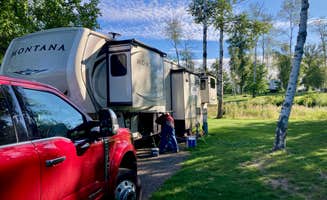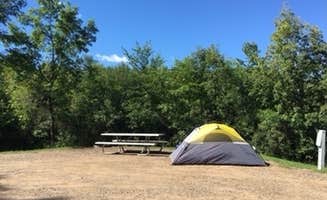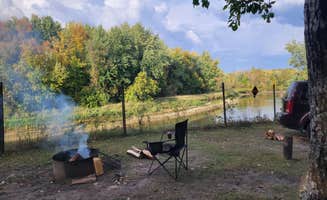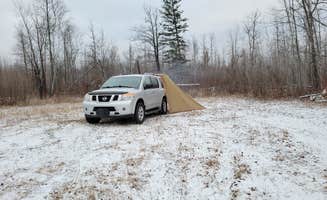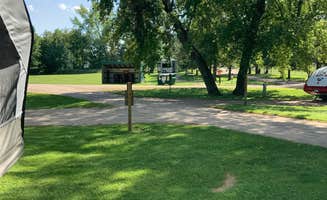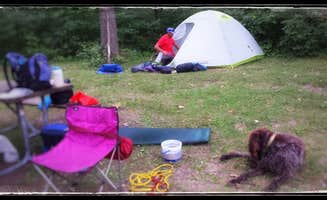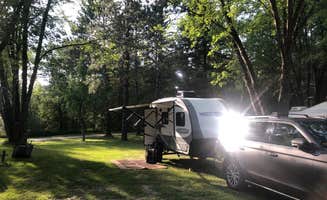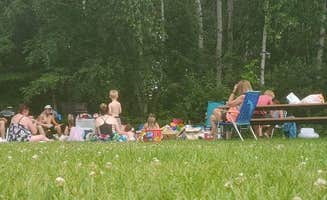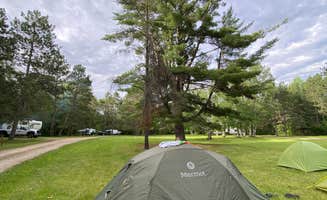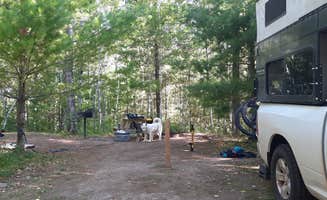The Turner area sits at approximately 1,300 feet elevation in northeastern Minnesota's forest transition zone, where coniferous and deciduous forests meet. The region experiences cold winters with heavy snow accumulation and warm summers with frequent thunderstorms. Campers should prepare for significant seasonal variations, with late summer bringing the most comfortable overnight temperatures but also peak mosquito activity.
What to do
Paddling on multiple lakes: Four interconnected lakes at Savanna Portage State Park Campground provide excellent canoeing opportunities for all skill levels. "The park features a lovely lake that's ideal for kayaking, fishing, or just relaxing by the water," notes a recent visitor. Water rentals available May through September.
Hiking the Continental Divide Trail: This historically significant 6-mile trail crosses the watershed boundary separating flows to the Atlantic Ocean and Gulf of Mexico. "The hike to see the continental divide was really cool. We saw a fox and a deer which was cool," reports one camper. Trail maps available at park office.
Golfing near campgrounds: Golfers can enjoy the 27-hole course adjacent to Minnesota National RV Park. "The 18 hole course is quite challenging where the 9 hole Savannah is shorter and a little bit easier," mentions one reviewer who stayed on-site. Reduced green fees available for campers.
What campers like
Well-spaced, private sites: Many campers appreciate the natural separation between sites at several campgrounds. "The campsites are well-spaced, private, and perfect for tents, offering a great connection to nature," writes a visitor to Savanna Portage State Park.
Waterfront access with docks: Sandy Lake COE Recreation Area offers premium waterfront sites with dedicated boat docks. "We were in spot 12 and it was right on the water... you can park your boat on the dock in front of your spot," notes one camper. Sites 1-14 have water views but book quickly.
Clean facilities: Multiple campgrounds maintain exceptionally clean bathroom facilities despite heavy summer use. "Showers and restrooms were super clean!" reports a visitor to Savanna Portage, while another camper at Sandy Lake COE noted the "great staff" keeping facilities well-maintained.
What you should know
Seasonal accessibility: Most camping spots near Turner, Minnesota close from October through April due to harsh winter conditions. "The location is very scenic, and the campers seem to be friendly and family oriented," writes a visitor to Bergland County Park, which operates only from "early May to late September."
Persistent insect challenges: Mosquitoes and flies remain problematic throughout the entire camping season, especially near wetlands. "It is buggy but it's Minnesota so you deal with it," acknowledged one camper, while another noted, "We couldn't sit outside. It was the RV or the gazebo. And this was all day, not just at night."
Water quality considerations: Several campgrounds draw drinking water from wells with high mineral content. Campers often mention bringing additional water for drinking and cooking. Water spigots typically operate from May through mid-October.
Tips for camping with families
Playground facilities vary significantly: Hay Lake Campground offers a natural setting without developed play areas. "The campground is a good size, and all the sites seem private. This is a state forest campground, and in MN, they are all very well maintained," notes one visitor. Consider bringing portable recreation equipment.
Beach access for children: Sandy Lake has family-friendly swimming areas with gradual entry points. "Loon lake has a nice little 'park' with a beach so that is great for families," mentions one camper. Swimming areas typically open after Memorial Day weekend.
Wildlife viewing opportunities: Several campgrounds offer junior ranger programs and wildlife viewing kiosks. "We spent the evening canoeing one of the lakes listening to Loons," writes a visitor, while another mentioned seeing "a bear while hiking."
Tips from RVers
Site leveling challenges: Many campgrounds feature slightly uneven sites requiring leveling blocks. "Gravel pads, some a bit out of level. All 50 amp water and sewer," notes a visitor to Minnesota National RV Park. Bring leveling equipment for most regional campgrounds.
Utility hookup locations: RVers frequently mention variable placement of water and electrical connections. "The utilities are in the far back of the site. I needed about 20' of sewer, electric, and water hose to reach my rig," reports one camper. Extension cords and extra-length hoses recommended.
Limited cell coverage: Most camping areas experience spotty cellular service. "We got 3 bars LTE on Verizon, and there was no CG WiFi," notes one RVer. Download maps and information before arrival as many campground websites don't function well offline.


